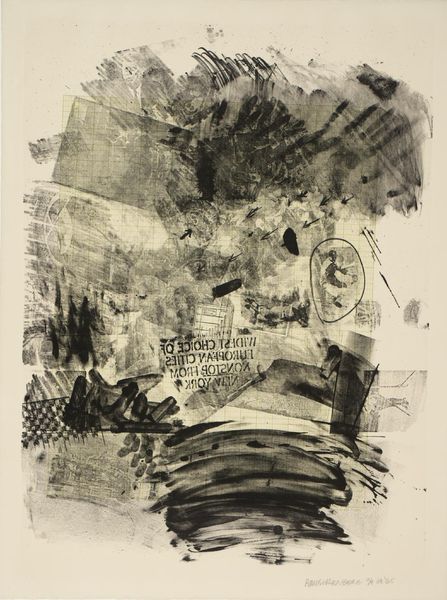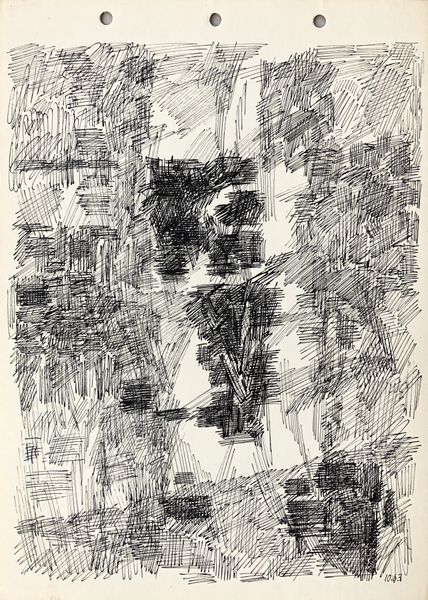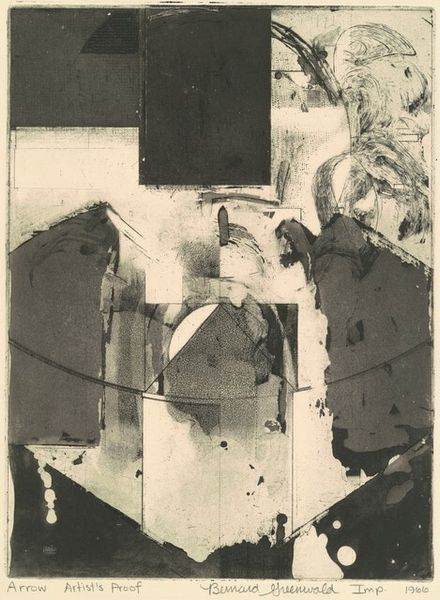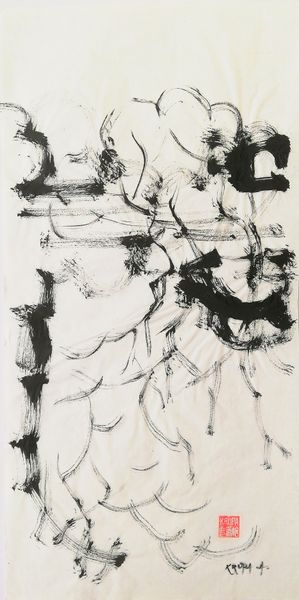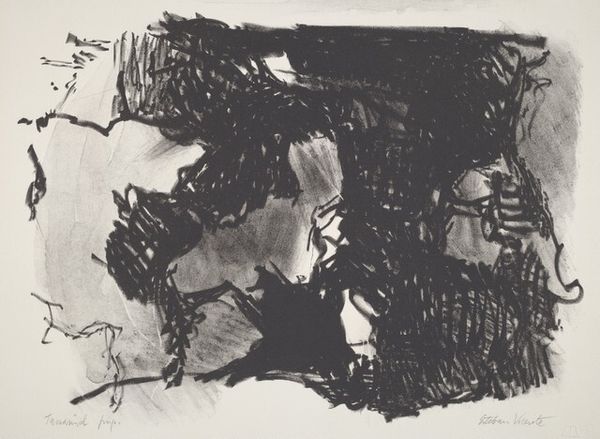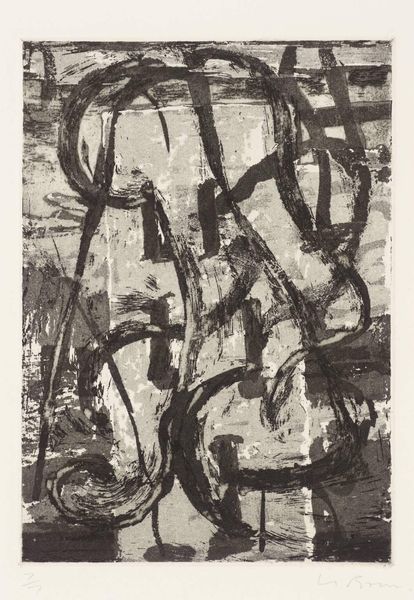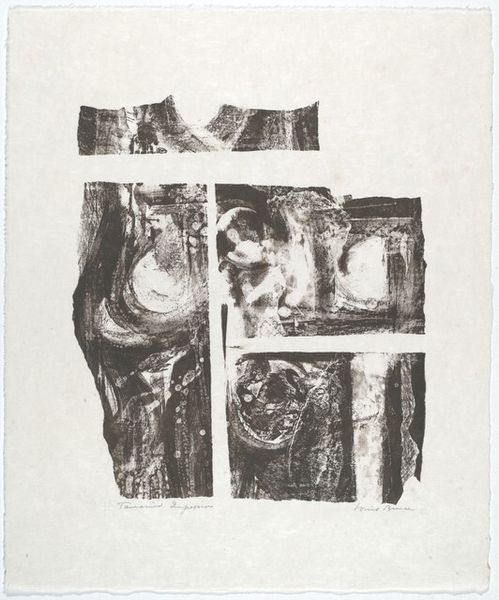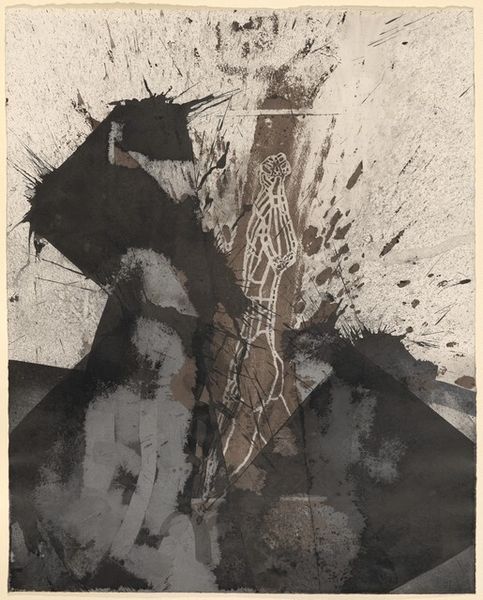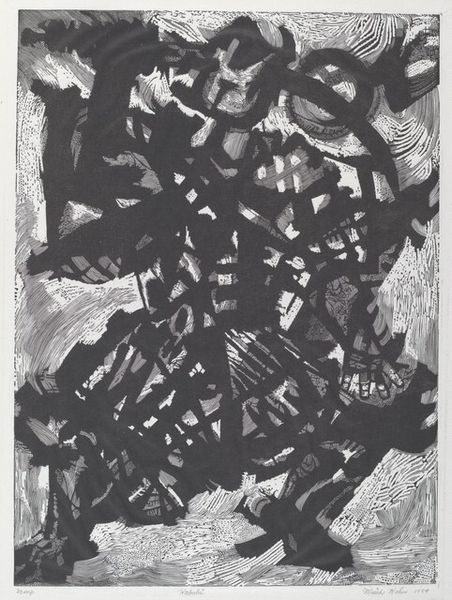
Dimensions: image: 765 x 564 mm
Copyright: Artwork © Robert Rauschenberg Foundation | CC-BY-NC-ND 4.0 DEED, Photo: Tate
Curator: Robert Rauschenberg, born in 1925, made this striking lithograph, Visitation II. Editor: It feels…volatile. Like a memory struggling to surface. I see smudges, ghostly images, and a powerful, churning energy. Curator: The lack of a specific date allows us to consider it within Rauschenberg's broader exploration of memory, technology, and the ephemeral nature of images in the mid-20th century. The medium itself reinforces this. Editor: Lithography—transferring images, layering, blurring… it’s like trying to hold onto something slippery. I can almost feel the artist’s hand, the pressure, the fleeting moment. Curator: Rauschenberg consistently challenged notions of originality and authorship, incorporating found images and embracing chance operations. It invites us to question what constitutes a "visit" or visitation. Editor: I keep seeing what looks like a window in the background. Almost as if we are seeing a scene from inside, looking out. Curator: Indeed, the window may hint at themes of interiority and observation, engaging with the subjective nature of perception. Editor: Looking at this, I feel like I'm sifting through fragments of someone else's dream. It's beautiful, in its way. Curator: And powerful in its ability to evoke such a personal response.
Comments
tate 8 months ago
⋮
http://www.tate.org.uk/art/artworks/rauschenberg-visitation-ii-p77107
Join the conversation
Join millions of artists and users on Artera today and experience the ultimate creative platform.
tate 8 months ago
⋮
This is the second of a pair of lithographs bearing the title Visitation which Rauschenberg made in 1965. Both were printed and published by Universal Limited Art Editions, New York, Visitation I in an edition of 42, Visitation II in an edition of 44. In each print the photographic imagery and its arrangement within the composition are the same: at top right there is a horse and jockey; to the left of centre, the head of a trumpet-player; at right centre, a larger image of a domestic interior, and at bottom centre, a farmer in checked shirt and peaked cap standing in a ploughed field and inspecting a box of plants. This final image also appears in Pledge, 1968 (Tate Gallery P77108). The use of photographic imagery is central to Rauschenberg's art and particularly to his printmaking.In both Visitation I and Visitation II the figurative elements are related to each other and are linked to the total design by large gestural sweeps and pools of lithographic tusche. This has been applied in a variety of ways: by brush, by wiping with fabric and by finger, and by dripping and splashing onto the stone. The scribbled marks were made by lithographic crayon. This format is typical of the lithographs which Rauschenberg produced from 1962 onwards. The range of imagery employed by Rauschenberg is drawn from modern life and popular culture. Recurrent themes include sports and sportsmen, politicians and public figures (especially the American Presidents John F. Kennedy and Lyndon B. Johnson), fine art, technology (particularly space travel), and modern city architecture. The images are arranged in a seemingly casual or random way and are meant to be read collectively rather than as individual images. The result is similar to the experience Rauschenberg described in reference to street life in a modern city: 'all you saw was a general no-colour in which the tone stood out' (quoted in Colin Tomkins, The Bride and the Bachelors, New York 1965, pp. 200-201). Further reading:Rauschenberg Graphic Art, exhibition catalogue, Institute of Contemporary Art, University of Pennsylvania, Philadelphia 1970, reproduced p.18 no.29The Tate Gallery 1984-86: Illustrated Catalogue of Acquisitions, London 1988, pp.447-8, reproducedTerry RiggsFebruary 1998
